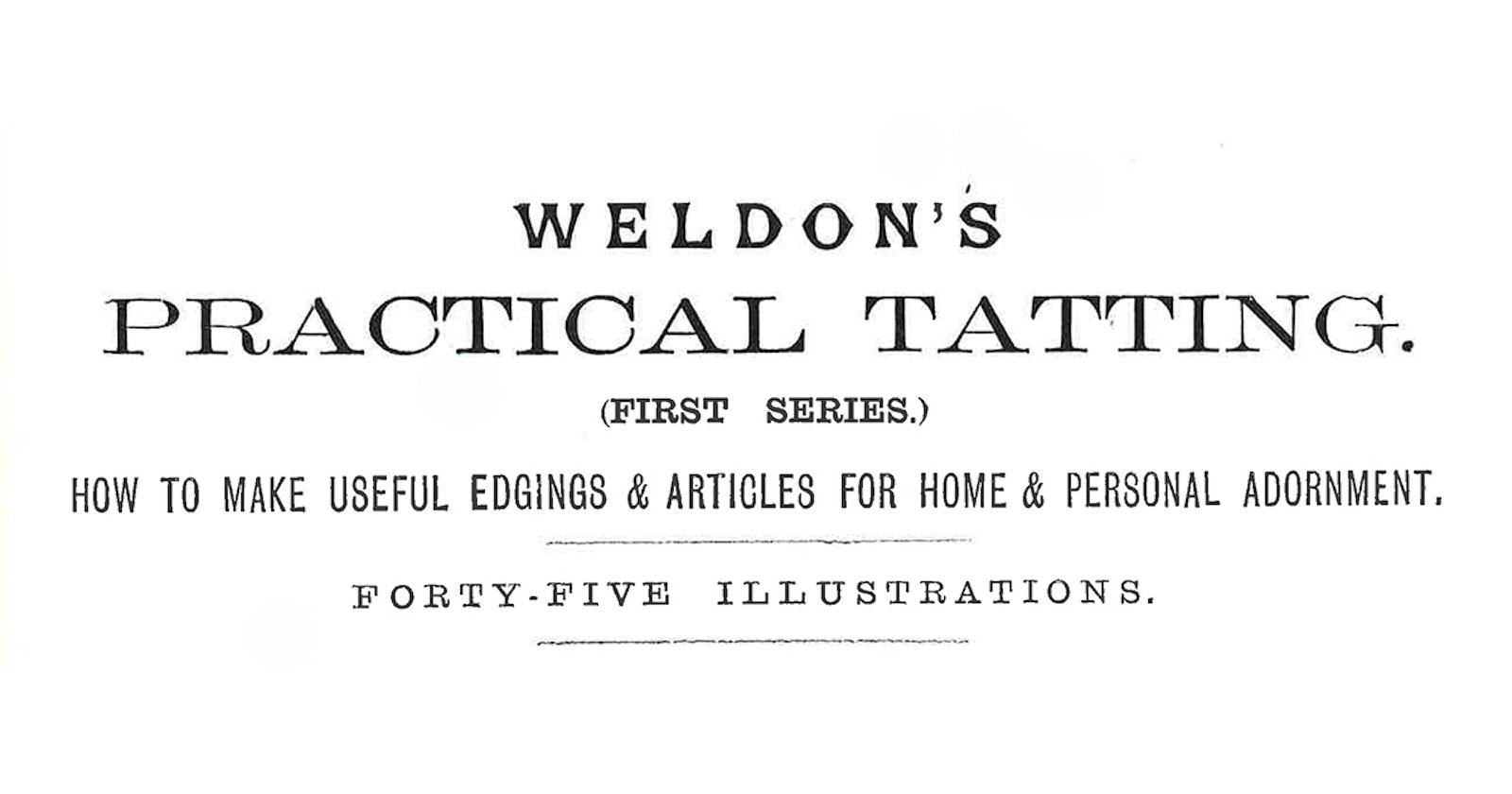Weldon’s Practical Needlework houses a wealth of information on Victorian tatting. Here’s our 18th installment in this series from Weldon’s Practical Needlework, Volume 4. The following are instructions for how to tat a “Square for a D'oyley, or for a Pincushion Cover.” The material is reproduced here just as it appeared in England in 1889. No alterations or corrections were made.

Illustrations from _Weldon’s Practical Needlework_, Volume 4.
SQUARE FOR A D'OYLEY, OR FOR A PINCUSHION COVER.
COATS’ crochet cotton, No. 10. Begin with the square medallion of trefoils in the centre of the d’oyley. * Make a loop with the shuttle thread, work 7 double stitches, 1 picot, 4 double, l picot, 3 double, and draw up; make another loop close, do 3 double, join to the last picot of the first leaf of the trefoil, 2 double and 1 picot alternately six times, 3 double, draw up; another loop close, work 3 double, join to the last picot of the second leaf, 4 double, 1 picot, 7 double, and draw up; reverse the work, take a second thread and forming with it a loop on the fingers, do 10 double stitches; reverse the work, then repeat from * three times, which completes the medallion; of course remember to join the last leaf of the fourth trefoil to the first leaf of the first trefoil; cut off the cotton, and tie firmly. Work four more trefoil medallions in the same manner as this centre one; these are for the corners, and as you work the last trefoil of each medallion, join the middle leaf by picot to a middle leaf of the centre medallion. Next, For the Border all round the d’oyley—Make a loop with the shuttle thread, do 7 double, 1 picot, 8 double, draw up; reverse the work, take a second thread, and making a loop, work 8 double, 1 picot, 8 double, join to the first of the picots on the corner leaf of a trefoil medallion, 8 double, join to the picot of the small oval just made, still with second thread work 8 double, join to the second picot of the corner leaf, 8 double, 1 picot, 8 double; reverse, make a loop with the shuttle thread, do 8 double, join to the picot of small oval (where join is already made), 7 double, draw up; make another loop with the shuttle thread, do 6 double, 1 picot, 4 double, 1 picot, 6 double, draw up; reverse, make a loop with the second thread, work 8 double; reverse the work, * make a loop with the shuttle thread, do 4 double, join to picot of the last oval, 2 double and 1 picot alternately six times, 4 double, and draw up; repeat from * twice; reverse, make a loop with the second thread, work 8 double; reverse, make a loop with the shuttle thread, do 5 double, join to the last picot of the last oval, 4 double, 1 picot, 6 double, draw up; make another loop, do 7 double, 1 picot, 8 double, draw up; reverse, make a loop with the second thread, work 8 double, join to the picot in the opposite bar, 8 double, join to the fourth picot on the corner leaf of the trefoil medallion, 8 more double, join to the picot of the small oval last made, still with second thread do 8 double, join to the fifth picot of the corner leaf, do 8 double, 1 picot, 8 double; reverse, make a loop with the shuttle thread, do 8 double, join to the picot of small oval (where join is already made), 7 double, draw up; make another loop with the shuttle thread, do 6 double, join to the picot in the opposite small oval, 4 double, l picot, 6 double, draw up; reverse, make a loop with the second thread, do 8 double; and continue the pattern to the end of the round, joining the work to the picots of the trefoil medallions, as shown in the illustration. Now proceed to fill up the spaces between the trefoil medallions by working four square sections of ovals—make a loop with the shuttle thread, do 4 double, 1 picot, 7 double, join to the middle picot of the three unoccupied picots in the leaf next the border, 7 double, 1 picot, 4 double, draw up; make a loop close, do 4 double, join to picot of the first oval, 7 double, join to the middle picot of the leaf next the border on the opposite side of space, 7 double, 1 picot, 4 double, draw up; make another loop close, work 4 double, join to picot of the second oval, 7 double, join to a picot of the centre leaf of the next trefoil and to a picot of the middle leaf of the centre trefoil, that is into the next two picots to the picot which joins these together, 7 double, l picot, 4 double, draw up; again make a loop close, do 4 double, join to picot of the third oval, 7 double, join to two picots on the opposite side, 7 double, join to the first picot of the first oval, 4 double, draw up; cut off the cotton, and tie the ends firmly together. Work three more square sections of ovals in the same manner. This completes the d’oyley.
Find out more about tatting in our video download Shuttle Tatting with master tatter Georgia Seitz. If you have created any items from this series, we would love to see them. Please email us at [email protected].
Featured Image: Weldon’s Practical Needlework, Volume 4, offers up a wealth of information on Victorian tatting.

